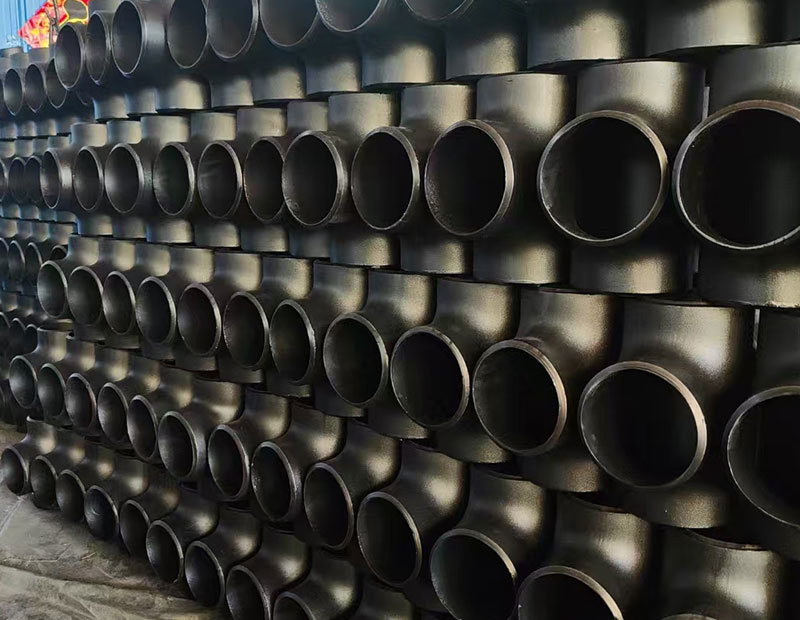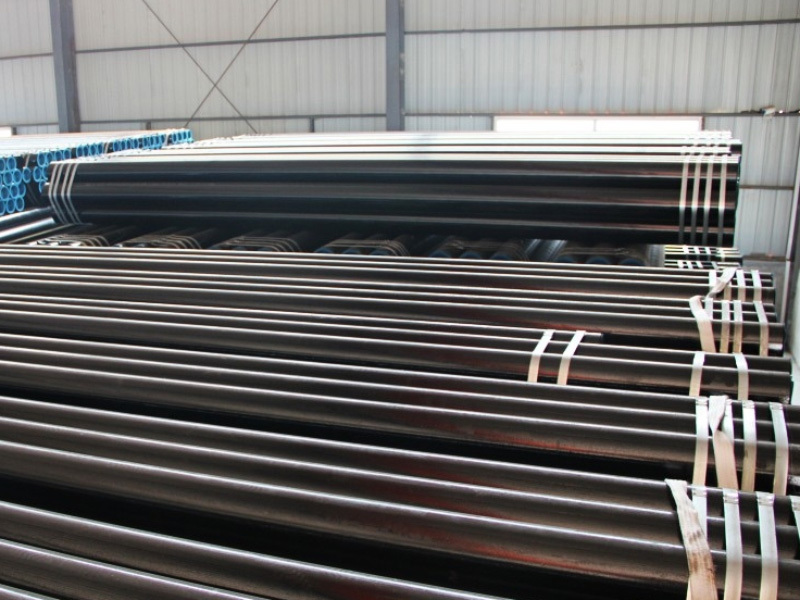Leading Smls Pipe and fittings supplier from China since 1991
Understanding How Environmental Factors Influence Oil Pipe Tube Performance: Key Insights
How Environmental Factors Affect Oil Pipe Tube Performance Table of Contents Introduction Understanding Oil Pipe Tube Performance Key Environmental Factors Impacting Oil Pipe Tube Performance The Impact of Temperature on Oil Pipe Tubes Humidity and Moisture Implications for Oil Pipe Tubes Corrosion and Environmental Degradation of Oil Pipe Tubes Pressure Variations: Their Enviro
Jul 25,2025

How Environmental Factors Affect Oil Pipe Tube Performance
Table of Contents
- Introduction
- Understanding Oil Pipe Tube Performance
- Key Environmental Factors Impacting Oil Pipe Tube Performance
- The Impact of Temperature on Oil Pipe Tubes
- Humidity and Moisture Implications for Oil Pipe Tubes
- Corrosion and Environmental Degradation of Oil Pipe Tubes
- Pressure Variations: Their Environmental Relationship with Oil Pipes
- Material Suitability in Various Environmental Conditions
- Best Practices for Maintaining Oil Pipe Tubes
- Conclusion
- Frequently Asked Questions
Introduction
In the world of automotive and industrial applications, **oil pipe tubes** play a critical role in the effective transportation of fluids. Understanding how various **environmental factors** can influence their performance is essential for ensuring longevity and reliability. From temperature fluctuations to the impact of humidity and potential corrosion, this article aims to provide a **comprehensive overview** of these factors and their implications.
Understanding Oil Pipe Tube Performance
The performance of oil pipe tubes is determined by a combination of physical and chemical properties intrinsic to the materials used, as well as the external conditions they are subjected to. Key performance metrics include durability, resistance to wear, and ability to maintain structural integrity under varying pressure conditions. As we explore the various environmental factors, we will highlight how they interact with these performance metrics.
Key Environmental Factors Impacting Oil Pipe Tube Performance
Several environmental factors significantly impact the performance of oil pipe tubes, including:
1. **Temperature**
2. **Humidity**
3. **Corrosion**
4. **Pressure Variations**
5. **Material Properties**
Understanding these factors helps in the selection of appropriate materials and design considerations for oil pipes.
The Impact of Temperature on Oil Pipe Tubes
Temperature is one of the most significant environmental factors influencing oil pipe tube performance. **Fluctuations in temperature** can lead to thermal expansion and contraction, affecting the structural integrity of the pipes. High temperatures may cause materials to soften, while low temperatures could lead to brittleness.
- **Thermal Expansion**: As temperatures rise, materials expand. This can create stress at the joints and fittings, potentially leading to leaks.
- **Softening of Materials**: Certain materials may lose their hardness at elevated temperatures, increasing the risk of deformation.
- **Impact on Fluid Viscosity**: Higher temperatures reduce oil viscosity, while lower temperatures can increase it, affecting flow rate and efficiency.
Humidity and Moisture Implications for Oil Pipe Tubes
Humidity plays a crucial role in the deterioration of oil pipe tubes, particularly in environments that experience high moisture levels. Prolonged exposure to moisture can lead to several issues:
- **Water Accumulation**: Water can accumulate in pipes, leading to contamination of oils and potential emulsification.
- **Rust and Corrosion**: High humidity levels promote rust formation, which can compromise the integrity of metal pipes.
- **Bacterial Growth**: Moist environments can foster the growth of bacteria and other microorganisms, which may lead to biofouling.
Corrosion and Environmental Degradation of Oil Pipe Tubes
Corrosion is a severe threat to the performance and lifespan of oil pipe tubes. Various environmental factors contribute to corrosion, including:
- **Chemical Exposure**: Chemicals present in the environment or in the fluids transported can accelerate corrosion.
- **Electrochemical Reactions**: When metals are exposed to moisture and electrolytes, electrochemical reactions can lead to significant degradation.
- **Environmental Stress**: Factors such as temperature fluctuations and pressure changes can exacerbate corrosion rates.
Pressure Variations: Their Environmental Relationship with Oil Pipes
Pressure is another critical factor that interacts with environmental conditions. Variations in pressure can arise from temperature changes and fluid dynamics.
- **Hydrostatic Pressure**: In submerged applications, the weight of the fluid can exert significant pressure on pipe walls, necessitating careful material selection.
- **Dynamic Pressure Changes**: Fluctuations in temperature can lead to changing pressure conditions, requiring pipes to be resilient and able to handle stress.
- **Pressure Ratings**: It’s essential to select pipes that are rated for the anticipated pressure conditions to avoid catastrophic failures.
Material Suitability in Various Environmental Conditions
Selecting the right material for oil pipe tubes is vital for performance and longevity in different environments. Common materials include:
- **Steel**: Known for its strength, steel is susceptible to corrosion but can be treated with coatings for enhanced protection.
- **Stainless Steel**: Offers better corrosion resistance, making it suitable for humid environments.
- **Polymer Materials**: Lightweight and resistant to corrosion, polymers are ideal for specific applications but may have limitations in high-temperature environments.
- **Composite Materials**: These materials combine the best properties of different substances, providing resilience in varied conditions.
Best Practices for Maintaining Oil Pipe Tubes
To mitigate the adverse effects of environmental factors on oil pipe tubes, implementing best maintenance practices is essential:
1. **Regular Inspections**: Conduct routine inspections to identify signs of wear, corrosion, or leaks.
2. **Preventive Maintenance**: Schedule regular maintenance tasks to address potential issues before they lead to failure.
3. **Proper Coatings**: Use protective coatings to shield pipes from corrosion and environmental degradation.
4. **Environmental Controls**: Where feasible, control environmental conditions such as temperature and humidity to extend the life of oil pipe tubes.
5. **Material Upgrades**: Consider upgrading to advanced materials that offer enhanced resistance against environmental impacts.
Conclusion
Understanding how environmental factors affect the performance of oil pipe tubes is crucial for ensuring their efficiency and longevity. By acknowledging the impacts of temperature, humidity, corrosion, pressure, and material selection, we can make informed decisions that enhance the durability of oil pipe systems. Implementing best practices and maintaining regular inspections will mitigate risks and optimize performance, ensuring that oil pipes serve their purpose effectively in diverse environmental conditions.
Frequently Asked Questions
1. How does temperature affect oil pipeline performance?
Temperature can cause thermal expansion and contraction, impacting the structural integrity and flow efficiency of oil pipes. High temperatures may soften materials, while low temperatures can cause brittleness.
2. What role does humidity play in oil pipe tube performance?
Humidity can lead to water accumulation, promoting corrosion and bacterial growth, which can deteriorate oil quality and pipe integrity.
3. How can corrosion be prevented in oil pipe tubes?
Using corrosion-resistant materials, applying protective coatings, and conducting regular maintenance can greatly reduce the risk of corrosion in oil pipes.
4. What materials are best suited for oil pipe tubes in humid environments?
Materials such as stainless steel and specially treated polymers are ideal for humid environments due to their resistance to corrosion and degradation.
5. Why is regular maintenance important for oil pipe systems?
Regular maintenance helps identify potential issues before they escalate, ensuring optimal performance and extending the lifespan of oil pipe systems.
Hot Tags:
PREVIOUS:






